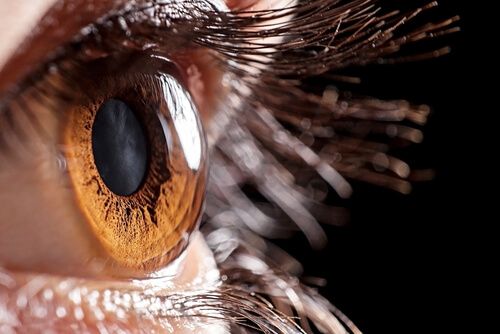Article
Healing is possible with persistent epithelial defects
Author(s):
According to Claudia Perez-Straziota, MD, persistent epithelial defects do not have to live up to their name—they can be healed.

Reviewed by Claudia Perez-Straziota, MD
Persistent epithelial defects (PEDs) do not have to live up to their name—they can be healed. However, healing will not be accomplished in 1 week—hence the name persistent—and even though vision can improve, refractive outcomes cannot be expected in these pathologic corneas. A staged treatment approach, patience, and the appropriate expectations are essential.
“Patience is the best ally in these cases,” said Claudia Perez-Straziota, MD, from the Cleveland Clinic Cole Eye Institute in Ohio. “Exhaust 1 therapy at a time before moving on to the next one.”
Normal and not-so-normal healing
When there is a disruption in the epithelium but the basement membrane remains intact, inflammatory agents secreted by the epithelial cells act on fibroblasts. This stimulates the production of growth factors that promote limbal stem cell migration as epithelial cells move toward the defect, repopulating the epithelium. This usually all happens over the course of approximately 7 days in healthy corneas.
However, when the basement membrane is disrupted, the secreted mediators produce migration of the epithelial cells, but the stroma does not proliferate toward the epithelial cells until there is physical contact between the regenerated basement membrane and epithelial cells. This process could take up to 8 weeks, especially in corneas with preexisting conditions that interfere with epithelial regeneration.
In these cases, when the process does not go smoothly, other substances come to play and the right amounts will stimulate epithelial remodeling and stromal healing. However, when the concentrations of these mediators are higher, stromal melting or necrosis can occur, resulting in a scenario that is detrimental to a normal smooth healing of the surface.
PED treatment strategies
The initial strategy to deal with a PED has the goal of providing mechanical protection so the defect is not perpetuated. These include ophthalmic lubricating ointments, temporary bandage contact lenses, and tarsorrhaphy, but these measures will only alleviate rather than solve the problem. They also have their own limitations: ophthalmic lubricants are only helpful in early cases, long-term use of bandage contact lenses can cause other complications, and tarsorrhaphy is used in recalcitrant cases and severe defects.
Control of inflammation is another strategy in these cases. Topical steroids are controversial, but when used cautiously, and in combination with prophylactic antimicrobials, steroids can aid in reducing the inflammatory components that perpetuate the cycle, Perez-Straziota explained.
“Importantly,” she said, “the number of topical agents that are not having a beneficial effect should be eliminated or at least minimized [because] they may potentially generate more inflammation. One example of this is the popular erythromycin ointment, which is rapidly prescribed by many for any problem that involves the epithelium.”
Nonmedicated ophthalmic lubricants can take the place of erythromycin to serve as a mechanical barrier without providing an unnecessary medication dose that can contribute to the inflammatory picture.
Another strategy in PED cases is to control apoptosis and necrosis. Perez-Straziota prefers doxycycline in cases with significant stromal involvement to inhibit metalloproteinases and interrupt the cycle of stromal necrosis and inflammation.
“Doxycycline is beneficial in cases in which stromal remodeling is the main issue,” she said.
To promote epithelial and stromal remodeling, ascorbic acid is also helpful to lay the extracellular matrix, and in some cases, helps to prevent significant residual haze.
Growth factors
Growth factors, such as Oxervate (cenegermin-bkbj; Dompé) ophthalmic solution 0.002%, serum tears, and amniotic membranes, are also quite effective in promoting epithelial remodeling. Oxervate is a new recombinant nerve growth factor that is FDA approved to treat all stages of neurotrophic keratitis.
Although this is not her first go-to option for initial management of PED because of cost and logistics, Perez-Straziota relies on it to treat patients who fail to respond to the previously mentioned therapies and has found it to be highly successful in patients with a recalcitrant PED.
Oxervate is structurally identical to endogenous nerve growth factor.
“It stimulates differentiation, proliferation, and survival of the epithelium,” she said.
The recommended dose for PED is 1 drop every 2 hours for 8 weeks. If the defect remains unresolved, that dose can be repeated for another 8 weeks. She advised continued dosing if the clinical exam shows improvement but not in those with no response.
According to Perez-Straziota, her patients have found Oxervate to be user-friendly. The manufacturer provides patient educational resources online and a program to assist with insurance coverage or financial assistance.
Perez-Straziota demonstrated cases in which Oxervate was used to treat neurotrophic keratitis secondary to previous herpes simplex virus infection, and exposure keratopathy due to Bell palsy, and after 8 weeks of treatment, the clinical images demonstrated substantial improvement.
Claudia Perez-Straziota, MD
E: perezsc@ccf.org
This article is adapted from Dr Perez-Straziota’s presentation at the Real World Ophthalmology meeting. She has no financial interests in this subject matter.
Newsletter
Don’t miss out—get Ophthalmology Times updates on the latest clinical advancements and expert interviews, straight to your inbox.





